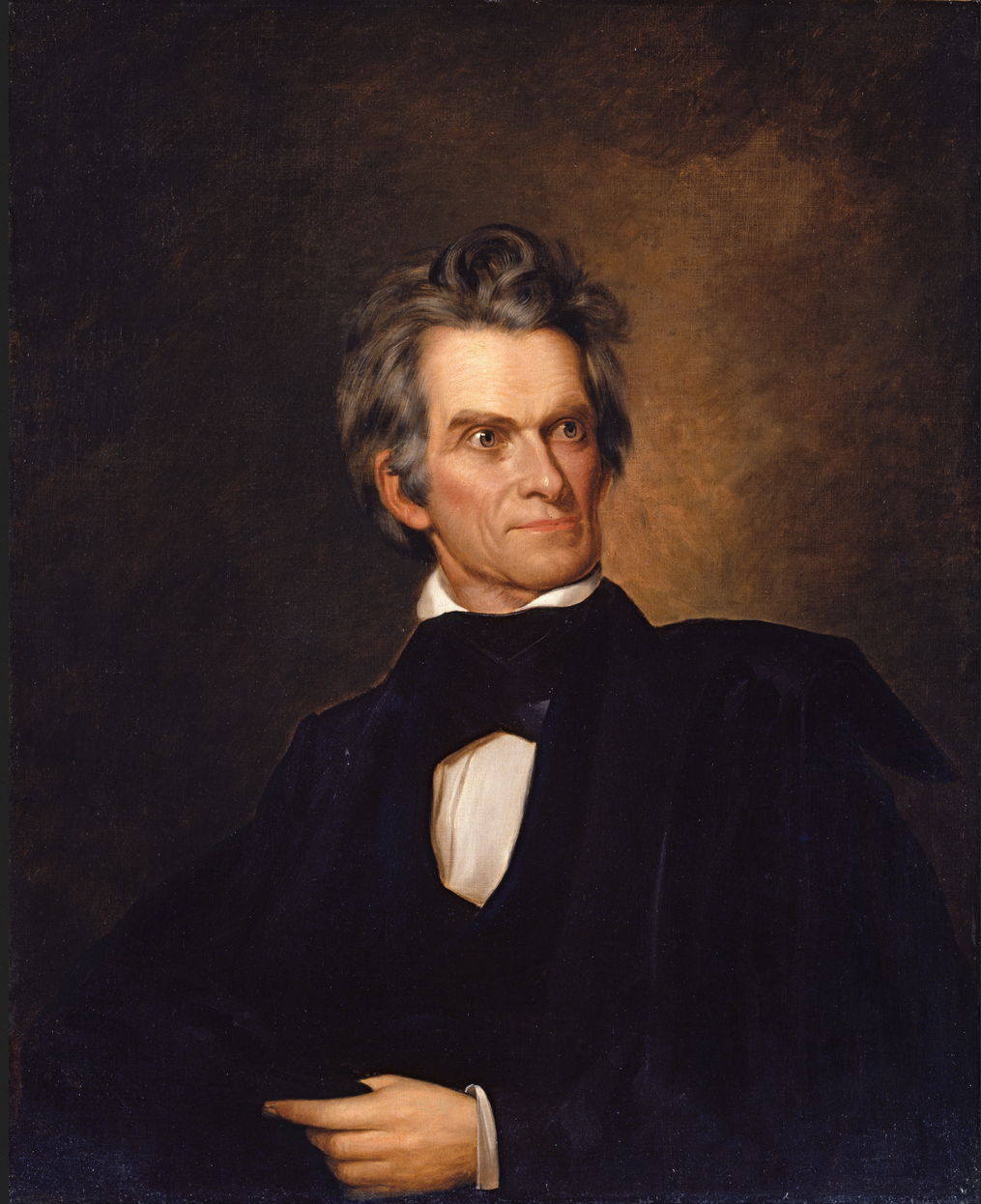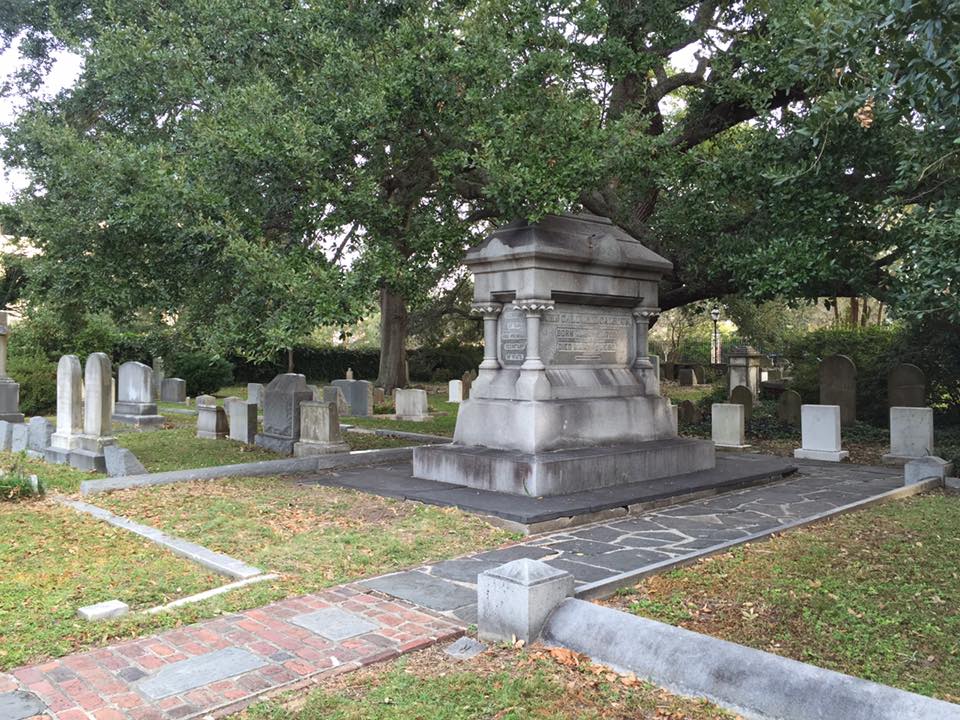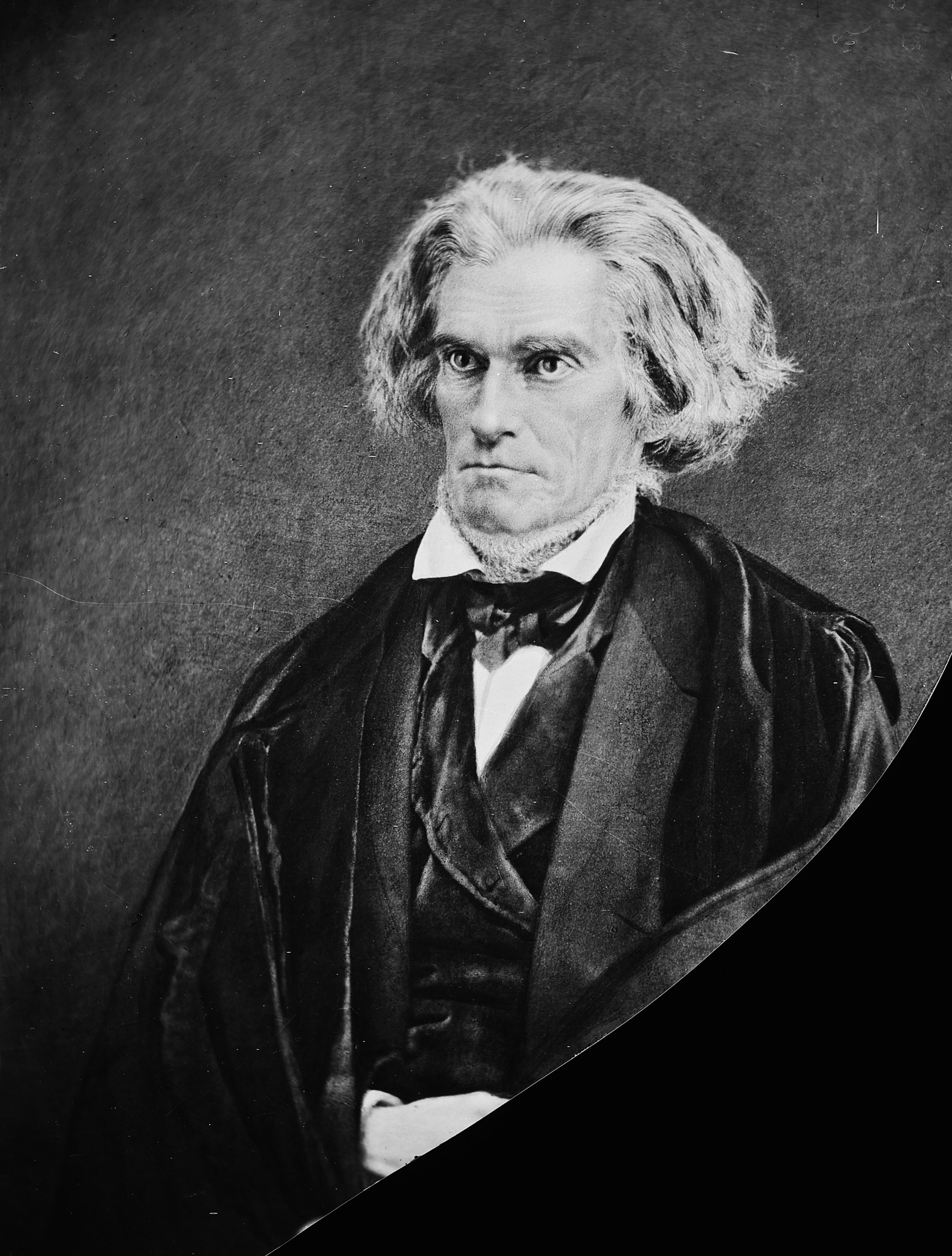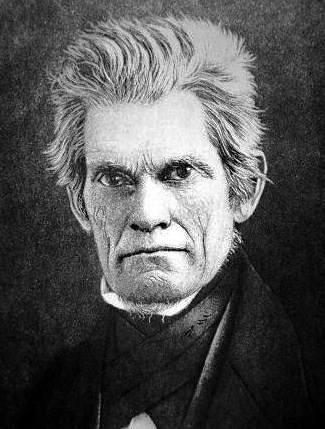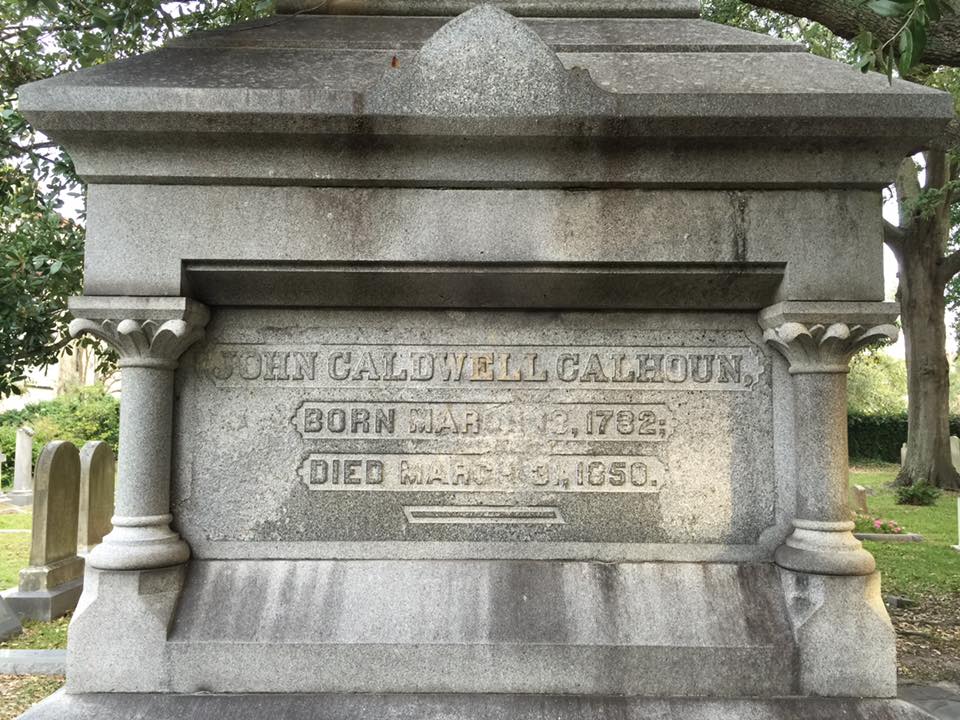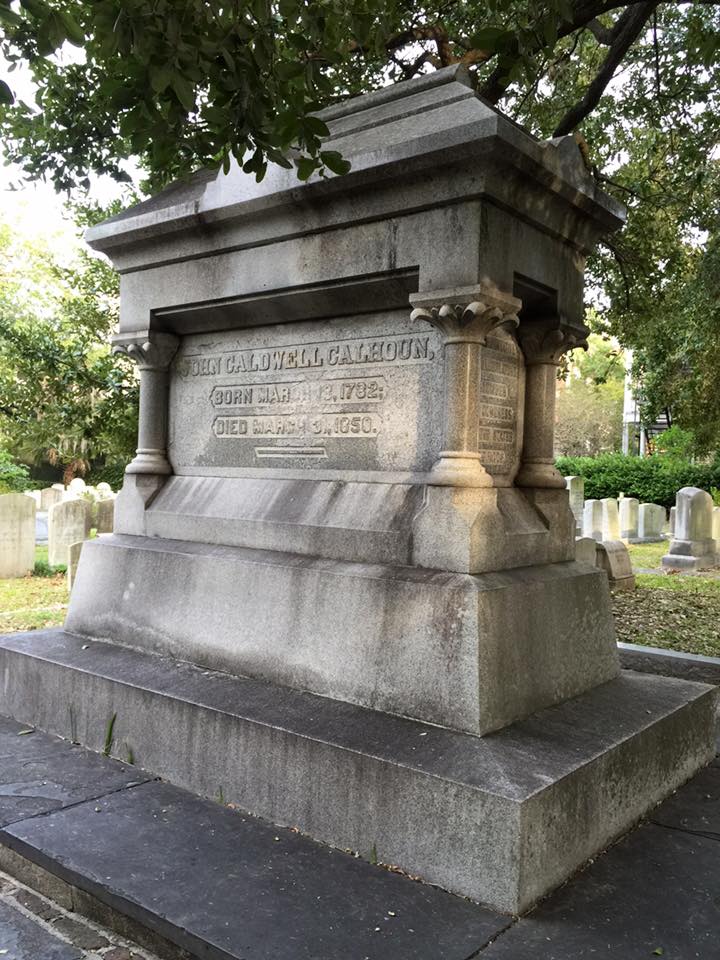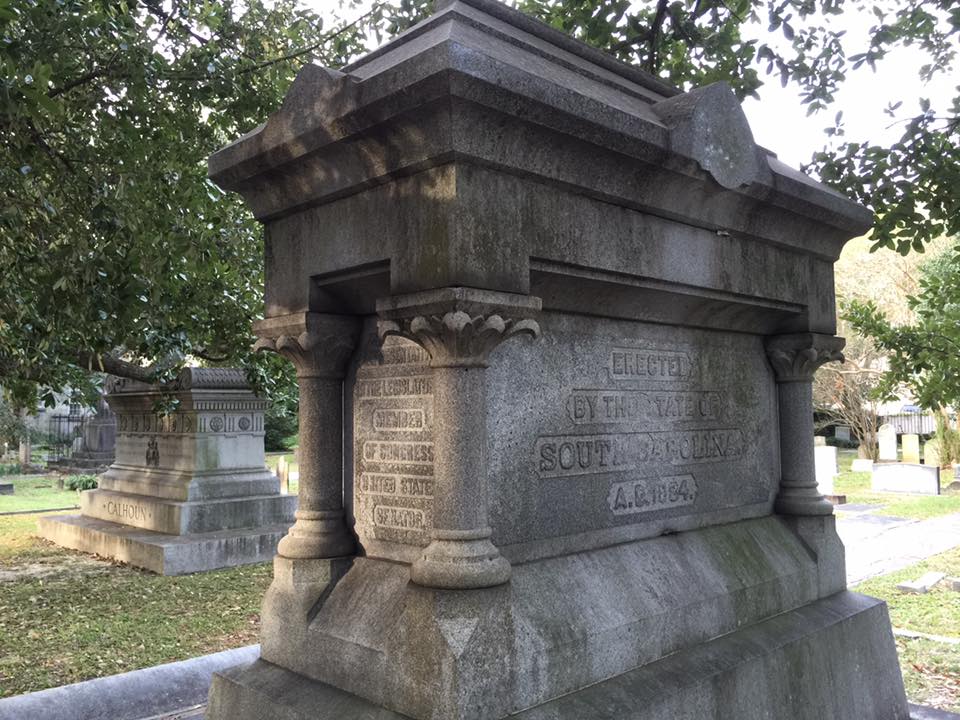7th United States Vice-President, US Congressman, US Senator, and Presidential Cabinet Secretary. He began his political career as a nationalist, modernizer, and proponent of a strong national government and protective tariffs. After 1830, his views evolved and he became a greater proponent of states' rights, limited government, nullification and free trade, as he saw these means as the only way to preserve the Union. He is best known for his intense and original defense of slavery as a "positive good" rather than a "necessary evil," his distrust of majoritarianism, and for pointing the South toward secession from the Union. He served as a member of the US House of Representatives from South Carolina's 6th district from March 1811 until November 1817, as the 10th US Secretary of War under President James Monroe from October 1817 until March 1825, as the US Vice President from March 1825 until December 1832 under Presidents John Quincy Adams and Andrew Jackson, as US Senator from South Carolina from December 1832 until March 1843 and again from November 1845 until his death in March 1850, and as the 16th US Secretary of State from April 1844 until March 1845. He was a member of the Democratic-Republican party until 1825, the Nullifier Party (a short-lived states' rights party that he founded) from 1828 until 1839, and finally the Democratic Party from 1839 until his death. Born John Caldwell Calhoun, the 4th child of an Irish immigrant father who was a prosperous South Carolina planter, he was forced to quit school at the age of 17 to help run the family farm when his father became ill. With his older brothers' financial support, he later returned to his studies, earning a degree in 1804 from Yale College in New Haven, Connecticut. After studying law at the Tapping Reeve Law School in Litchfield, Connecticut, he was admitted to the South Carolina bar in 1807. In 1810 he won his first election to Congress. The following January, he married Floride Bonneau Colhoun, a first cousin once removed, who was the daughter of South Carolina US Senator and lawyer John E. Colhoun, and with whom he had ten children. He was among the "War Hawks" who strongly supported the US War of 1812 against England. As Secretary of War, he reorganized and modernized the War Department, building powerful permanent bureaucracies that ran the department, created the Bureau of Indian Affairs in 1824 to centralize and make it more efficient, and supervised the negotiation and ratification of 38 treaties with Native American tribes. He was originally a candidate for US President in the election of 1824, but after failing to win the endorsement of the South Carolina legislature, he decided to become a candidate for Vice President. While no presidential candidate received a majority in the Electoral College and the election was ultimately resolved by the House of Representatives, the Electoral College elected him vice president by a landslide. He served four years under John Quincy Adams, and in 1828, won re-election as Vice President running with Andrew Jackson, becoming one of two vice presidents to serve under two different presidents. Under Andrew Jackson, his vice presidency was controversial and he developed a rift over financial policy with Jackson. By February 1831, his break with Jackson was final and on December 28, 1832, he became the first vice president in US history to resign from office and he ran and was elected to the US Senate rather than continue as Vice President. Due to his nullification beliefs during the crisis, his chances of ever becoming President were very low. After the Compromise Tariff of 1833 was implemented, the Nullifier Party, along with other anti-Jackson politicians, formed a coalition known as the Whig Party. He sided with the Whigs until he broke with key Whig Senator Daniel Webster over slavery, as well as the Whigs' program of "internal improvements." He led the pro-slavery faction in the Senate in the 1830s and 1840s, opposing both abolitionism and attempts to limit the expansion of slavery into the western territories. He was a major advocate of the 1850 Fugitive Slave Law, which required the cooperation of local law enforcement officials in free states to return escaped slaves. After serving as Secretary of State from 1844 to 1845, he returned to the Senate where he participated in the political struggle over the expansion of slavery in the Western states. Regions were divided as to whether slavery should be allowed in the formerly Mexican lands. The debate over this issue culminated in the Compromise of 1850, devised by Senators Henry Clay and Stephen Douglas, and was designed to solve the controversy over the status of slavery in the vast new territories acquired from Mexico. Calhoun, back in the Senate but too feeble to speak, wrote a blistering attack on the compromise. A friend read his speech, calling upon the Constitution, which upheld the South's right to hold slaves, and warned that the day "the balance between the two sections" was destroyed would be a day not far removed from disunion, anarchy, and civil war. He died of tuberculosis at the Old Brick Capitol boarding house at the age of 68. His Fort Hill plantation home in Clemson, South Carolina, is now occupied by the Clemson University campus. A monument to his honor was erected in Charleston, South Carolina. In 1957, US Senators honored him as one of the "five greatest senators of all time" and the USS John C. Calhoun was a Fleet Ballistic Missile nuclear submarine, in commission from 1963 to 1994. A cenotaph in Washington, DC's Congressional Cemetery was erected in his honor. An interesting note: Saint Philips Church, where he is buried, has a cemetery on three sides of the church and then additional graves across the street. In order to be buried on the church side of the street, one must have been born in Charleston, South Carolina. Because he was born in Clemson, South Carolina, and although he lived in Charleston, he is buried across the street from the church. His wife, who was born in Charleston died at Pendleton, South Carolina and was buried near her children at St. Paul's Episcopal Church Cemetery in Pendleton, not with her husband at St. Philip's Episcopal Church Cemetery in Charleston.
7th United States Vice-President, US Congressman, US Senator, and Presidential Cabinet Secretary. He began his political career as a nationalist, modernizer, and proponent of a strong national government and protective tariffs. After 1830, his views evolved and he became a greater proponent of states' rights, limited government, nullification and free trade, as he saw these means as the only way to preserve the Union. He is best known for his intense and original defense of slavery as a "positive good" rather than a "necessary evil," his distrust of majoritarianism, and for pointing the South toward secession from the Union. He served as a member of the US House of Representatives from South Carolina's 6th district from March 1811 until November 1817, as the 10th US Secretary of War under President James Monroe from October 1817 until March 1825, as the US Vice President from March 1825 until December 1832 under Presidents John Quincy Adams and Andrew Jackson, as US Senator from South Carolina from December 1832 until March 1843 and again from November 1845 until his death in March 1850, and as the 16th US Secretary of State from April 1844 until March 1845. He was a member of the Democratic-Republican party until 1825, the Nullifier Party (a short-lived states' rights party that he founded) from 1828 until 1839, and finally the Democratic Party from 1839 until his death. Born John Caldwell Calhoun, the 4th child of an Irish immigrant father who was a prosperous South Carolina planter, he was forced to quit school at the age of 17 to help run the family farm when his father became ill. With his older brothers' financial support, he later returned to his studies, earning a degree in 1804 from Yale College in New Haven, Connecticut. After studying law at the Tapping Reeve Law School in Litchfield, Connecticut, he was admitted to the South Carolina bar in 1807. In 1810 he won his first election to Congress. The following January, he married Floride Bonneau Colhoun, a first cousin once removed, who was the daughter of South Carolina US Senator and lawyer John E. Colhoun, and with whom he had ten children. He was among the "War Hawks" who strongly supported the US War of 1812 against England. As Secretary of War, he reorganized and modernized the War Department, building powerful permanent bureaucracies that ran the department, created the Bureau of Indian Affairs in 1824 to centralize and make it more efficient, and supervised the negotiation and ratification of 38 treaties with Native American tribes. He was originally a candidate for US President in the election of 1824, but after failing to win the endorsement of the South Carolina legislature, he decided to become a candidate for Vice President. While no presidential candidate received a majority in the Electoral College and the election was ultimately resolved by the House of Representatives, the Electoral College elected him vice president by a landslide. He served four years under John Quincy Adams, and in 1828, won re-election as Vice President running with Andrew Jackson, becoming one of two vice presidents to serve under two different presidents. Under Andrew Jackson, his vice presidency was controversial and he developed a rift over financial policy with Jackson. By February 1831, his break with Jackson was final and on December 28, 1832, he became the first vice president in US history to resign from office and he ran and was elected to the US Senate rather than continue as Vice President. Due to his nullification beliefs during the crisis, his chances of ever becoming President were very low. After the Compromise Tariff of 1833 was implemented, the Nullifier Party, along with other anti-Jackson politicians, formed a coalition known as the Whig Party. He sided with the Whigs until he broke with key Whig Senator Daniel Webster over slavery, as well as the Whigs' program of "internal improvements." He led the pro-slavery faction in the Senate in the 1830s and 1840s, opposing both abolitionism and attempts to limit the expansion of slavery into the western territories. He was a major advocate of the 1850 Fugitive Slave Law, which required the cooperation of local law enforcement officials in free states to return escaped slaves. After serving as Secretary of State from 1844 to 1845, he returned to the Senate where he participated in the political struggle over the expansion of slavery in the Western states. Regions were divided as to whether slavery should be allowed in the formerly Mexican lands. The debate over this issue culminated in the Compromise of 1850, devised by Senators Henry Clay and Stephen Douglas, and was designed to solve the controversy over the status of slavery in the vast new territories acquired from Mexico. Calhoun, back in the Senate but too feeble to speak, wrote a blistering attack on the compromise. A friend read his speech, calling upon the Constitution, which upheld the South's right to hold slaves, and warned that the day "the balance between the two sections" was destroyed would be a day not far removed from disunion, anarchy, and civil war. He died of tuberculosis at the Old Brick Capitol boarding house at the age of 68. His Fort Hill plantation home in Clemson, South Carolina, is now occupied by the Clemson University campus. A monument to his honor was erected in Charleston, South Carolina. In 1957, US Senators honored him as one of the "five greatest senators of all time" and the USS John C. Calhoun was a Fleet Ballistic Missile nuclear submarine, in commission from 1963 to 1994. A cenotaph in Washington, DC's Congressional Cemetery was erected in his honor. An interesting note: Saint Philips Church, where he is buried, has a cemetery on three sides of the church and then additional graves across the street. In order to be buried on the church side of the street, one must have been born in Charleston, South Carolina. Because he was born in Clemson, South Carolina, and although he lived in Charleston, he is buried across the street from the church. His wife, who was born in Charleston died at Pendleton, South Carolina and was buried near her children at St. Paul's Episcopal Church Cemetery in Pendleton, not with her husband at St. Philip's Episcopal Church Cemetery in Charleston.
Bio by: William Bjornstad
Family Members
Advertisement


















